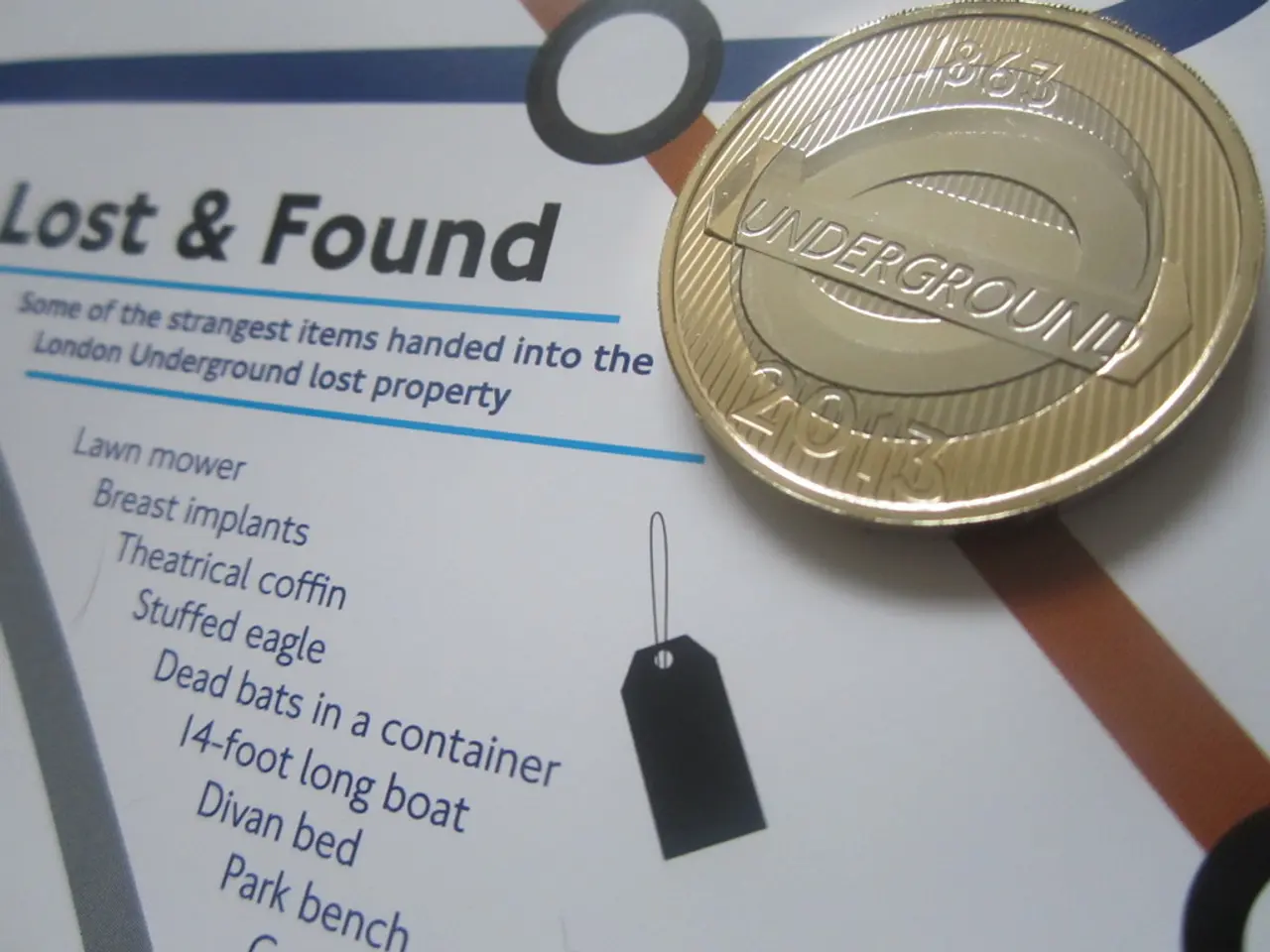Standardization of Calendars: A Cross-Cultural Evolution
Supreme Guide to Calendars: Tracing Our Timeline Across Ages and Cultures
Calendars, two-faced timekeepers, have their roots planted in the heart of human civilization. Formed with the simple intention to align our daily lives with the gentile pulses of nature, they tell a rich tale of history, astronomy, religion, and society. Join us as we delve into the intricate dynamics that pushed calendars from localized systems to the global timekeeping structures we embrace today.
The Genesis of Calendars: Early Systems Among Civilizations
Calendars' beginnings can be traced back to the agricultural societies that emerged in the distant past. Each civilization crafted its own timekeeping system, unique as a fingerprint, sculpted by local geography, astronomy, and cultural beliefs. Let's explore some early forms:
1. Lunar Calendars
Among the earliest types of calendars were lunar calendars, built around the moon's phases. These were common among civilizations like the Babylonians and ancient Chinese, typically consisting of 29 or 30 day months. However, their lunar foundation often contributed to a misalignment with solar seasons, making farming planning problematic.
2. Solar Calendars
With a more constant connection to the changing seasons, solar calendars offered a more reliable framework for tracking agricultural shifts. Ancient Egyptians based their solar calendar on the heliacal rising of Sirius, which coincided with the Nile's flooding.
Hot Tips!
When Did the Day of the week Originate?
The idea of dividing a week into 7 days dates back to the Babylonians and their 7 planets of worship.
3. Hybrid Systems
To tackle inconsistencies, many societies merged lunar months with solar cycles, creating lunisolar calendars. Notable examples include the Jewish and Hindu calendars, which incorporated elaborate intercalary adjustments to maintain seasonal accuracy.
Still Hungry for More?
Secrets of Human Origins: What Archaeology Tells Us About Our Ancestors
The Unluckiest Days in History: How Calendar Snafus Changed the Game
The Cosmic Calendar: How the Universe Was Born and Evolved Over Time
The Need for Harmony: Trade, Empire, and Religion Paved the Way for Standardization
As civilizations ventured into one another's spheres through trade, conquest, and diplomacy, the necessity of a unified calendar became increasingly evident. Disparate systems created turbulence, particularly within trading ventures and governance. Three key factors fueled the thirst for standardization:
READ MORE
Extreme Measures: Human Impacts on Rainforests Through History
The World's Largest and Most Strange Flags: A Dazzling Array of Symbols
The Mysterious Messengers of Ebola: Scourge of a Deadly Virus
1. The Roman Empire and the Julian Calendar
The expansive Roman Empire played a crucial role in initial calendar standardization. Julius Caesar introduced the Julian calendar in 45 BCE, a solar-based system with 365 days and a leap year every four years. Inspired by Egyptian timekeeping, this system laid the groundwork for subsequent Western calendars.
The Benefits of the Julian Calendar
- Streamlined administrative tasks became possible with a predictable annual cycle.
- Unified timekeeping catapulted coordination across the vast empire to new heights.
2. Religious Influence
Religious beliefs exerted substantial impact on calendar standardization. For example, the spread of Christianity necessitated a unified system to calculate Easter. This led to further adjustments in the Julian calendar, culminating in the introduction of the Gregorian calendar.
3. The Gregorian Calendar: A Global Framework
In 1582, Pope Gregory XIII unveiled the Gregorian calendar to rectify inaccuracies in the Julian system. The new calendar discarded 10 days from the month of October that year and introduced a fresh rule for leap years. Although initially embraced only by Catholic nations, it gained acceptance due to its superior precision and became the global standard.
Time Flies: Challenges in Calendar Standardization Across Cultures
Although the Gregorian calendar has dominated the world stage, universal adoption was neither swift nor complete. Cultural, political, and religious factors obstructed its widespread acceptance in non-Western societies.
Resistance to Change
- Orthodox Christians: Many Orthodox Christian churches continue to follow the Julian calendar for liturgical purposes.
- Islamic World: The Islamic world has largely clung to the lunar Hijri calendar, which remains entrenched in Islamic practices, showcasing cultural resilience.
Colonial Influence
The imposition of the Gregorian calendar on colonized territories often collided with indigenous systems, igniting tensions and devastating loss of cultural heritage.
Today’s World: Why Calendar Standardization Matters in Our Time
The standardized calendar system profoundly influences contemporary society, shaping everything from economics to cultural exchanges.
1. Global Connectivity
A unified calendar fosters seamless international trade, travel, and communication, ensuring synchronized collaboration across time zones.
2. Economic Efficiency
The precision and synchronization provided by standardized calendars underpin global financial markets, where punctuality and shared time frameworks are indispensable.
3. Cultural cohesion and pluralism
The Gregorian calendar is the global standard; nonetheless, traditional calendars persist, illuminating a vibrant tapestry of cultural heritage. This harmony of sorts encourages cultural understanding in an interconnected world.
Final Thoughts: Calendars as Mirrors of Human Unity
The story of calendar standardization showcases humanity's ingenuity and adaptability. By aligning with celestial patterns and societal needs, cultures developed systems that transcended borders, catalyzing unity and progress. Asking “how did calendars become standardized across cultures?” reveals a common journey marked by cooperation, conflict, and reconciliation.
The Gregorian calendar serves as a testament to shared harmony today. While it permeates our daily lives, it coexists with traditional calendars, each reflecting a unique cultural identity. This blend emphasizes our shared history while fostering the preservation of diversity.
Delving into the evolution of calendars instills in us an appreciation for the complex dance between science, culture, and tradition that prevails in our rapidly evolving world. As we navigate the myriad cultural dimensions of today's interconnected world, let us celebrate the systems that unite us while preserving the beauty of our rich cultural heritages.
Enrichment Data:
Calendar standardization has undergone significant transformations across ages and cultures, influenced by various factors like astronomical observations, religious practices, and administrative needs. Take a look at the essential developments in different regions:
The Ancient Cradle: Calendars in Ancient Civilizations
- Egyptian Calendar: One of the earliest known calendars originated from ancient Egypt, which functioned as a solar calendar with 365 days. It consisted of 12 months, with an extra five days added to the end of the year. This calendar was utilized around 2500 BCE[1].
- Babylonian Calendar: The Babylonians operated on a lunisolar calendar, combining both solar and lunar cycles. This calendar bore considerable influence on those that followed in the region[1].
The Roman and Julian Chapter: Calendars In the Roman Empire
- Julian Calendar: Introduced by Julius Caesar in 45 BCE, the Julian calendar was a solar calendar with 365 days and a leap year every four years. Its various iterations proved to be the foundation for later Western calendars[3].
Processing the Gregorian Reform: Standardization Across Eras
- Gregorian Calendar: In 1582, Pope Gregory XIII debuted the Gregorian calendar as a reform to correct the Julian calendar's faults. The reform calendar omitted 10 days from the month of October that year and introduced a new rule for leap years. Although initially adopted only by Catholic nations, it gradually became accepted across the globe[2].
Eastern and Asian Chronometers: Calendars in Perspective
- Chinese Calendar: The Chinese calendar is a lunisolar calendar, with each cycle based on both lunar phases and solar years. This calendar has been used for millennia, and is still employed for traditional purposes today[1].
- Bengali Calendar: The Bengali calendar, which is based on a solar year, is used in Bangladesh, predominantly for administrative and cultural purposes. It is believed to be influenced by Akbar's "Tarikh-ilahi" calendar[5].
Calendars of Faith: Islamic and Hindu Chronicles
- Islamic Hijri Calendar: A lunar calendar based on the Hijri, or Islamic, calendar, which begins with the year of the Prophet Muhammad's migration to Medina, is central to Islamic practices and culture[5].
- Hindu Calendars: Hindu calendars, heavily influenced by lunisolar cycles, are used for religious and cultural purposes within various regions of India. These calendars vary significantly across the nation, with some following regional astronomical traditions[6].
- Ancient civilizations such as the Babylonians and the ancient Chinese utilized lunar calendars, which were based on the phases of the moon and typically consisted of 29 or 30 day months, signifying that science and culture played a significant role in shaping early timekeeping systems.
- As societies evolved and encountered one another through trade, conquest, and diplomacy, the necessity of a unified calendar became increasingly evident, demonstrating that both history and politics had a part in the development of global timekeeping structures.
- The upcoming shift from the Julian calendar to the Gregorian calendar, led by Pope Gregory XIII in the 16th century, showcased the interplay between science, technology, and religion, as it aimed to rectify the inaccuracies in the Julian system, thereby illustrating that these elements have continued to shape our calendars throughout history.




